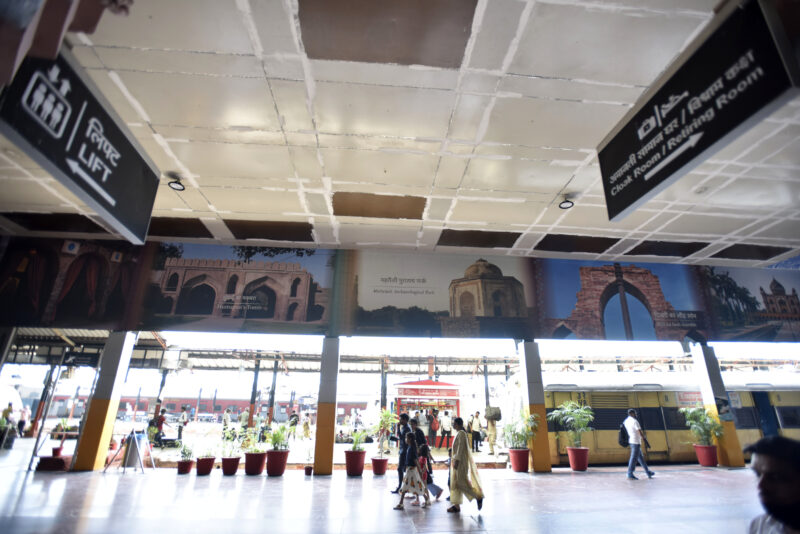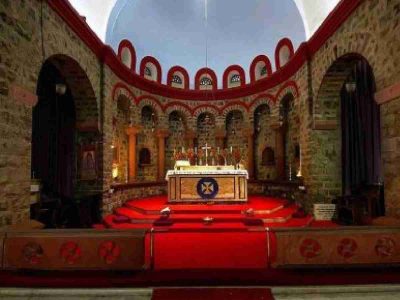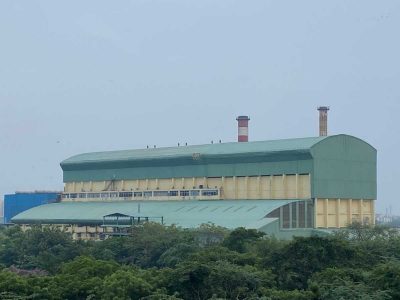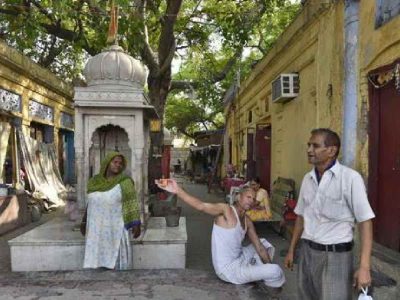An eerie silence, even during the day, marks out the Lodhi Colony railway station. There are no passengers, no coolies here. And it’s quite possible that you would miss it while driving past unless you spot the signboard.
The station, which gets its name from the 1946-built Lodhi Colony, wasn’t always so desolate. In 1947, it was teeming with thousands of Muslim refugees trying to make it to Pakistan. It was one of the two stations dedicated to the movement of refugees in the national capital. The other being the Old Delhi railway station (then known as Delhi Junction), where Hindu and Sikh refugees from Pakistan were deboarding in large numbers.
Separate stations were earmarked for refugees of different faiths to ensure that they didn’t encounter each other at a time when communal violence was at its peak.
The family of former Pakistan President Parvez Musharraf is said to have left Delhi in 1947 by train.
Also read: Afghan refugees’ school of hope hangs by a thread
RP Puri, the founder of Central News Agency (CNA), used to work as a newspaper hawker on Minto Road, Thomson Road and Janpath at the time of Partition.
Puri had once told this writer that Musharraf’s father was a senior government employee and used to stay in a house on Minto Road allotted to him by the government.
Since Minto Road is close to the New Delhi railway station, it is possible that they would have boarded the train from New Delhi Railway Station rather than Lodhi Colony.
The family of former Pakistan fast bowler Sikander Bakht also took a Pakistan-bound train from the Lodhi Colony station after a heated debate. Some wanted to remain in the land of their forefathers, while others wanted to move to the newly-created country.
“My father, J. Bakht, an alumnus of St. Stephen’s College, had a house in Karol Bagh known as ‘Hameed Manzil’. Some family members decided to move out of Delhi. They took a train from Lodhi Colony perhaps on August 20, 1947,” recalls Sikander Bakht, who wrecked the Indian batting lineup with his lethal swing bowling at the Arun Jaitley Stadium (earlier known as the Ferozeshah Kotla), taking a total of 11 wickets in the city of his forefathers in the 1979-80 India-Pakistan series, which India eventually won.
Sikander Bakht’s cousin, Ayesha Kidwai, who taught at the Jawaharlal Nehru University (JNU), says, “In 1947, many Muslim families were divided as some members decided to remain here, while others left for Pakistan. My father decided that come what may, we would remain in India. He never regretted his decision.”
The trains from Delhi to Lahore ran twice or thrice a day in August 1947. The trains left Lodhi Colony station before 12.30 pm to reach Lahore by 7 pm, before dark.
Ravinder Kumar, author and ex-Railway board official, says, “As trains with refugees coming to the Indian side or going to Pakistan were often attacked, the timing of trains was fixed to ensure the safety of the passengers.”
Tickets to Lahore could be bought from a makeshift Pakistan government office at L- block, Connaught Place.
After leaving the Lodhi Colony station, the Pakistan-bound train would reach the New Delhi railway station in a couple of minutes. It would halt there for nearly half an hour while coaches were added to it. These coaches were meant exclusively for government employees leaving India.

It is said that due to partition, 20% of the flats at Kishanganj Railway Colony were vacated as almost all the Muslim employees serving in stations like Delhi Junction, New Delhi, Sabzi Mandi and Minto Road left for Pakistan. The colony, established in 1920, is considered the largest railway employee colony in the world.
Padam Kumar, a social activist and advocate, has lived at Kishanganj Railway Colony for several decades. He says, “I used to hear from my father and others in the colony that nearly all the Muslim employees living there had left for Pakistan. The flats they vacated were later occupied by railway employees who came from across the Border.”
The other station
At 9.30 in the morning, the imposing Old Delhi railway station is already bustling with activity. Coolies, passengers and vehicles are out. The station has witnessed stories of separation as well as assimilation.
It is the common thread between PL Sharma, an ex-section officer at the Ministry of Agriculture, and Farhad Suri, former Delhi Mayor. If Sharma came here as a seven-year-old with his family from native Lahore, Suri grew up listening to stories of those heady days when his father, Wali Mohammad Babar reached here with Taj Mohammad Khan and others from Peshawar. Taj Mohammad Khan was the father of film star Shahrukh Khan. It was here, at Delhi Junction, that countless Hindu, Sikh and some Muslim refugees from across the Radcliffe line reached in 1947.
Recalls Sharma, “We were comfortably placed in Lahore. However, when the riots began, we had to move out of the city where we had been settled for over two hundred years. I vividly remember my family being escorted out by our Muslim neighbours in a tonga to Lahore Railway station. The Lahore to Amritsar journey was scary till our train hadn’t crossed Pakistan. All the passengers were praying for safety. Thankfully, we reached safely. After halting for a little over one hour, we left for the Delhi Junction.”
As trains bound for Delhi entered from Sabzi Mandi railway station, some refugees chose to get down there. Jag Pravesh Chandra, who went on to become Delhi’s Chief Executive Councillor (CEC), also got down there with his mother and sister. He had a relative living near the station.
In his epic story, Amritsar Aa Gaya (Amritsar has arrived), noted writer Bhisham Sahni reflects on the mood of passengers (read refugees) from west Punjab. The younger brother of legendary actor Balraj Sahni, Bhisham Sahni, too arrived at the Delhi Junction with his family from Rawalpindi.
Says Suri, “People still don’t believe that many Muslims, including my father, had shunned Pakistan for India. My father was a die-hard Congress activist in Peshawar. When partition became inevitable, my father, Taj uncle, Mohammad Yunus (who became head of Trade Fair Authority of India) and others left their homeland for Delhi via Lahore.”
In Delhi, Babar joined the Persian service of All India Radio (AIR) and later got married to Tajdar Babar, a native of Kashmir who went on to become a four-time MLA in Delhi.
Milkha Singh in Delhi
The story of ‘Flying Sikh’ Milkha Singh, an Olympian athlete, is really heart-wrenching. At the age of 16, he arrived at Delhi Junction all alone. Some family members of Milkha Singh, including his father, were butchered in the riots over Partition. He managed to reach a safe place in Delhi from his riot-torn city of Multan. Milkha used to recall that he first reached Firozpur on a truck. He stayed there in a refugee camp. From Firozpur, he came to Delhi after learning that his younger sister was there. The siblings had lost track of each other.
In Delhi, Singh used to live in Pahargunj’s Chunna area. Luckily, he managed to find his sister’s whereabouts after much effort.
“The scene at the Delhi Junction used to be very chaotic as thousands of refugees were staying there, just outside the station. They were getting food from local people and Gurudwara Sis Ganj,” he once told a couple of journalists.
Indeed, the wounds of partition have still not healed. Those who had suffered then still become very emotional while sharing their stories.
Writer and ex-Railway Board Chairman YP Anand does not like to speak on the train journeys across the Radcliffe line.
Sitting in his Vasant Kunj residence, Anand, who is now 92, was in tears when he said, “What is the point of recalling the rail journeys of refugees? We had a chilling journey from Sialkot to Jammu on the way to Delhi. We thought that our 21-kilometre journey from Sialkot to Jammu would be free of troubles. Alas, we were naive. Our train, which was moving at a decent speed, suddenly stopped at a secluded place. It was a deserted spot. Within seconds, assailants entered our train with sharp weapons. They killed dozens of passengers, including several of my family members.”
Anand couldn’t speak any further. His blood-soaked train later reached Jammu. He does not remember how he reached Delhi.
Not every refugee from Pakistan took a train to Delhi Junction.
Khushwant Singh, then a lawyer in the Lahore High Court, drove from Lahore to Delhi.
“I drove on a totally empty, blank road all the way to Delhi. I didn’t see a soul till I reached Delhi,” Khushwant Singh told Manleen Sandhu before his death in March 2014, relating his personal experience of Partition.
Even HP Nanda, a transporter, came to Delhi in his car. Legend has it that Nanda came to Delhi from Lahore with only Rs 5,000 and two cars. And yet he stayed at The Imperial at Janpath. He later established the Escorts group.





